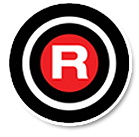Qeydiyyat prosesi, oyunçular üçün yeni imkanlar açan bir mərhələnin başlanğıcıdır. Burada, istifadəçilər üçün təqdim olunan mükafatlar və xüsusi təkliflər ilə maraqlanmaq önəmlidir. Hər yeni oyunçu, qeydiyyatdan keçərək, müxtəlif təşviq vasitələrini əldə edə bilər. Bu, platformanın inkişaf etmiş tətbiq yükləmə sistemləri sayəsində daha da asanlaşır.
Cashback imkanlarıyla oyunçular, itkilərini minimuma endirə bilərlər, bu da onların oyun təcrübəsini daha da müsbət edir. Bununla yanaşı, loyallıq proqramları, istifadəçiləri daim cəlb etməyə kömək edərək, onların platformada daha uzun müddət qalmasına imkan tanıyır. Hər kəs üçün əlçatan olan pulsuz fırlanmalar isə əlavə şans təqdim edir və oyun prosesini daha maraqlı edir.
Bu yazıda, qeydiyyat zamanı təqdim olunan təkliflər və promokodlardan necə faydalanılacağına dair ətraflı məlumat verəcəyik. Gəlin, bu imkanlardan maksimum dərəcədə istifadə edərək, oyun təcrübənizi daha da zənginləşdirək.
BetAndreas-da Bonusların Növləri və Şərtləri

Onlayn qumar platformalarında iştirak edərkən, mükafatlar və xüsusi təkliflər oyunçular üçün cəlbedici bir məqamdır. BetAndreas-da müştərilər müxtəlif növ bonuslardan faydalana bilərlər. Bu mükafatlar, qeydiyyatdan keçdikdən sonra oyunculara təqdim edilir və onların oyun təcrübəsini artırmağa yönəlmişdir.
Başlıca bonuslar arasında istənilən depozitə bağlı olan promosyonlar və pulsuz fırlanmalar yer alır. Bu təkliflər, yeni müştərilər üçün əla bir başlanğıc imkanı yaratmaqla yanaşı, həm də aktiv oyunçulara öz oyunlarını inkişaf etdirmək üçün əlavə resurslar təqdim edir. Hər bonusun öz şərtləri var. Məsələn, pulsuz fırlanmalar üçün xətlərin aktiv olması və müəyyən bir oyunda istifadə edilməsi zəruridir.
Cashback təklifləri, oyunçuların itkilərini azaltmaq üçün düşünülmüş alətdir. Beləliklə, müştərilər müəyyən bir dövr ərzində etdikləri etibarsız məbləğlərin bir hissəsini geri alaraq, yeni oyunlar üçün əlavə vəsaitlər topaya bilərlər. Bu cür loyalty proqramları, müştəri məmnuniyyətini artırmağa yönəlmişdir.
Kimi müştərilər, öz proqramlarında registrasiya edərkən, promokodlardan istifadə edərək xüsusi mükafatlar əldə edə bilərlər. Bu, oyunun daha maraqlı olmasını təmin edən əhəmiyyətli bir imkan yaradır. Hər bir bonusun istifadəsi üçün qaydaları diqqətlə oxumaq tövsiyə olunur ki, gələcəkdə mümkün çətinliklərin qarşısı alınsın.
Beləliklə, BetAndreas-da təqdim olunan müxtəlif bonus və mükafatlar, oyunçuların təcrübəsini zənginləşdirir və onlara daha çox şans təqdim edir. Daha ətraflı məlumat üçün [buraya](https://betandreas-az.info/) daxil olun.
Promokodları Necə Əldə Edə Bilərsiniz?

Looking for fairness? Try https://betandreas-az.info/ — certified games and secure payments.
Promokodlar, mükafatlar və bonuslar əldə etmək üçün əla imkandır. Bu xüsusi kodlardan yararlanmaq üçün bir neçə üsul mövcuddur. Aşağıda bəzi yolları paylaşırıq:
- Tətbiq Yükləmə: Mobil tətbiqlərdən istifadə edərək bonuslar və pulsuz fırlanmalar əldə etmək mümkündür. Tətbiqi yüklədikdən sonra, platformadakı təkliflər bölməsindəki promokodları aktiv edə bilərsiniz.
- Qeydiyyat: Yeni istifadəçilərə təqdim edilən xüsusi bonuslardan yararlanmaq üçün, qeydiyyatdan keçərkən promokod daxil etmək faydalı olur. Bu, sizə əlavə mükafatlar və cashback imkanları təqdim edir.
- Sosial Media və E-poçt: Təşkilatların sosial media hesablarını izləmək və e-poçt bülletenlərinə abunə olmaq, gizli promokodları əldə etmək üçün bir yoludur. Müvafiq məlumatları alaraq, yeni təkliflərdən xəbərdar ola bilərsiniz.
- Loyallıq Proqramları: Müxtəlif platformalar, uzunmüddətli istifadəçilərinə xüsusi mükafatlar və promokodlar təqdim edir. Loyallıq proqramlarına qoşulmaq, daha çox fırsatlardan yararlanmağa imkan tanıyır.
Unutmayın ki, promokodları istifadə etməzdən əvvəl, onların şərtləri və müddətləri ilə tanış olmaq vacibdir. Bu, daha yaxşı şanslar və mükafatlar əldə etməyə kömək edəcək.
Bonusları Aktivləşdirərkən Diqqət Ediləcək Məsələlər

Bonusların aktivləşdirilməsi prosesi zamanı bir neçə əhəmiyyətli məqamı nəzərə almaq lazımdır. İlk öncə, qeydiyyat zamanı tətbiq yükləmə imkanı ilə bağlı olan xüsusi təkliflərə diqqət yetirmək vacibdir. Bu, yeni istifadəçilər üçün əlavə mükafatlar qazanma şansı təqdim edir.
Loyallıq proqramları da xüsusilə maraqlıdır. Bunlar müştərilərin aktiv iştirakını mükafatlandırır və cashback imkanı ilə birlikdə istifadəçilərin qazancını daha da artırır. İstifadəçilər, davamlı olaraq bu proqramlar vasitəsilə əlavə mükafatlar əldə edə bilərlər.
Promokodlardan istifadə etdikdə, bu kodların düzgün tətbiq olunduğundan əmin olunmalıdır. Yanlış daxil edilmiş bir kod, mükafatların itirilməsinə səbəb ola bilər. Bu səbəbdən, hər bir detalı diqqətlə nəzərdən keçirmək mütləqdir.
Nəhayət, bonus və xüsusi mükafatların şərtlərini oxumaq və başa düşmək önəmlidir. Hər bir təklifin özünəxas qaydaları olur və bu qaydaların müstəqil araşdırılması, istifadəçilərin daha sərfəli seçimlər etməsinə kömək edəcəkdir.
Bonuslar və Promokodlarla Faydalanma Strategiyaları
İnternetdə oyun platformaları ilə bağlı mükafat sistemləri, istifadəçilərin məmnuniyyətini artırmaq məqsədilə müxtəlif imkanlar təqdim edir. Bu imkanlardan ən faydalı olanları, qeydiyyat zamanı əldə edilən bonuslardan, cashback-lardan və pulsuz fırlanmalardan ibarətdir. bunlar, yeni müştərilərin cəlb olunmasında mühüm rol oynayır.
Qeydiyyatdan keçdikdən sonra, ilk addım olaraq, tətbiq yükləmə prosesini tamamlayaraq mərhələləri izləməkdir. Mobil tətbiqlərin istifadəsi, oyun təcrübəsini daha da zənginləşdirir və mükafatları asanlıqla əldə etməyə şərait yaradır. Bu mərhələdə, xüsusi təkliflərdən yararlanmaq və promosyon kodlarını düzgün tətbiq etmək mühimdir.
Həmçinin, loyallıq proqramlarının üstünlüklərindən faydalanmaq, uzunmüddətli oyunçular üçün faydalı ola bilər. Bu proqramlar, oyunçuları müntəzəm olaraq mükafatlandırır və onlara daha geniş imkanlar təqdim edir.
Promokodlardan istifadə edərək, oyunçular əlavə faydalar qazana bilərlər. Bu kodlar, müəyyən promosiya dövrlərində tətbiq edildikdə, daha yüksək mükafatlara və sərfəli şərtlərə gətirib çıxarır. Müxtəlif kampaniyalar zamanı diqqətli olmaq, müştərilərə daha əlverişli şərtlərlə oyuna daxil olmağa imkan tanıyır.
Nəticə olaraq, bonuslar və promokodlar, oyun dünyasında mükafatlar qazanmaq üçün əhəmiyyətli vasitələrdir. Yaxşı düşünülmüş strategiyalar ilə, hər bir istifadəçi maksimum fayda əldə edə bilər.
Suallar-cavab:
BetAndreas bonusları ilə necə tanış ola bilərəm?
BetAndreas bonusları ilə tanış olmaq üçün rəsmi veb saytını ziyarət edə bilərsiniz. Saytda mövcud olan promosyonlar, bonus növləri və şərtləri barədə ətraflı məlumat verilmişdir. Həmçinin, müştəri dəstəyi ilə əlaqə saxlayaraq əlavə məlumat əldə edə bilərsiniz.
BetAndreas-da promokodlardan necə istifadə etməliyəm?
BetAndreas-da promokodlardan istifadə etmək üçün, qeydiyyat prosesi zamanı ya da depozit etmə mərhələsində müvafiq sahəyə kodu daxil etməlisiniz. Promokodun aktivləşdirilməsi üçün diqqət yetirin ki, kodu düzgün daxil edəsiniz. Aktivləşdirdikdən sonra bonus və ya digər təkliflər əldə edə bilərsiniz.
BetAndreas bonus şərtləri nələrdir?
BetAndreas bonus şərtləri bonusun növündən asılı olaraq dəyişir. Məsələn, bəzi bonuslar üçün minimum depozit, dövriyyə tələbləri və ya spesifik oyunlar üzrə məhdudiyyətlər ola bilər. Bonus şərtləri ilə mardan tanış olmaq üçün, müvafiq bonusun təqdimatı altında yer alan şərtləri oxumaq vacibdir.
Promokodların vaxtaşırı yenilənməsi mümkündürmü?
Bəli, BetAndreas-da promokodlar vaxtaşırı yenilənir. Hər yeni promosyon dövründə yeni kodlar təqdim olunur. Bəzi xüsusi tədbirlər, bayramlar və ya idman yarışları zamanı əlavə kodlar təqdim edilə bilər. Düzgün və güncəl kodlardan yararlanmaq üçün veb saytını və sosial media hesablarını izləmək faydalıdır.
